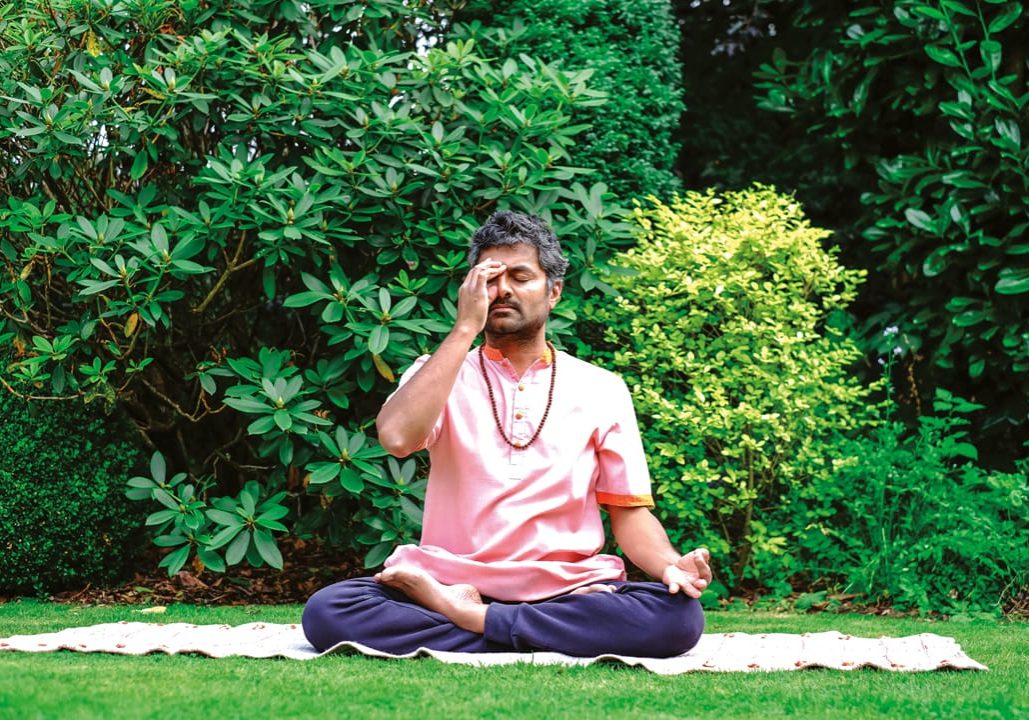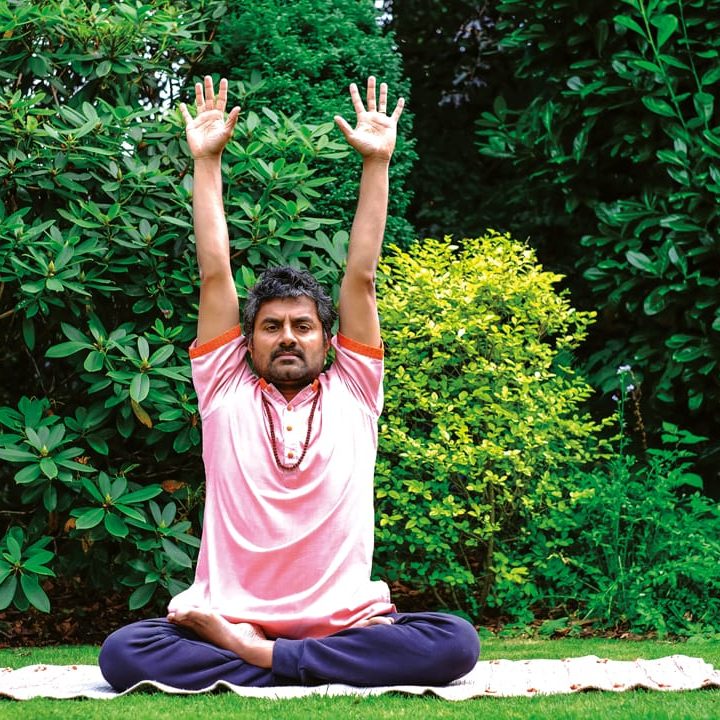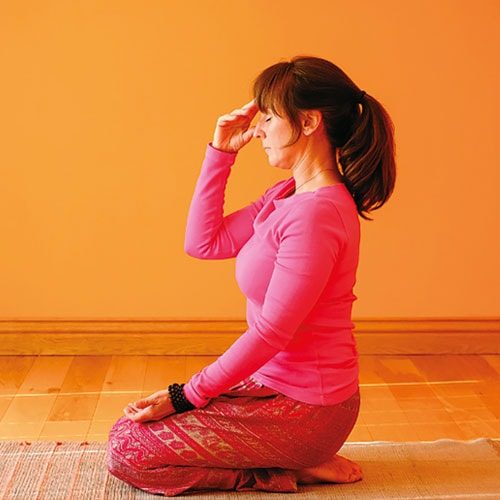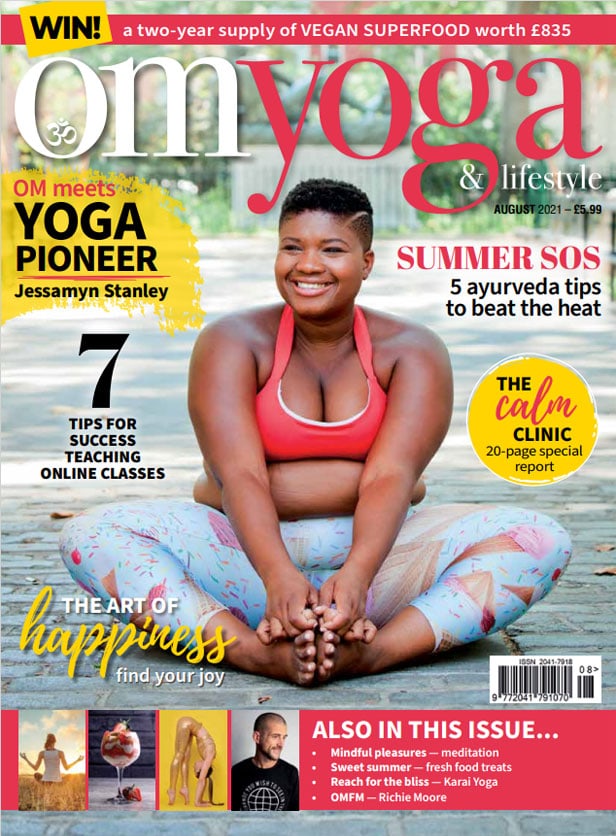
Why learn pranayama
Better breathing practices will change your life, setting you up for both meditation and a calmer, more peaceful day
The power of breathing is only realised when we dedicate part of our daily practice to it. When we spend time on breath awareness, the personal rewards include: a calmer, more focused mind; a more mindful approach to our day; deep self-acceptance; unity; the ability to react from detachment; brain stimulation, which includes strengthening the neural connections, stimulating the cerebral cortex and calming the amygdala (fight-or-flight response); increasing emotional intelligence; and empathy for others…and much, much more. All of these things will promote both a happier, calmer mind and body.
Pranayama is a natural way to lead into meditation and will help you to find a path that enhances not only your life but those around you too. It is the fourth limb of Patanjali’s eight-fold path and, in some texts, translates to ‘breath control’ or expanding our life-force energy called Prana. Pranayama will teach you how to direct the breath and bring balance back to your mind, leading you to the best possible place for meditation.
It also teaches you how to use the full lung, strengthening your lungs in the process, and as a result, improving overall health and wellbeing as it moves you from the sympathetic to parasympathetic nervous system where our body relaxes.
Learning breathing tools is a priceless life skill that can be used at any time of day and without any equipment, making it accessible to all.
In its simplest form, it requires you to be sitting with a straight spine and to apply your attention to the breathing of your choice.
Once you’ve experienced these various breathing practices you can then pick and choose. When you need to warm up and awaken the mind and body you can apply a heating tool; when you’re tired and busy in mind you can use a restorative tool.
When we learn how to breathe with awareness, understand the connection between our lungs and respiratory diaphragm and the workings of our internal nose, every inhale and exhale will bring new appreciation; these tools will enable you to enhance your life significantly. Once learnt, they can be used daily or weekly to support your mental and physical health, to promote inner calm and a peaceful mind.
One to create a calm and balanced mind and body is Nadi Shodhana, or alternate nostril breathing (ANB). This simple practice works on a deeper level to connect left and right brain hemispheres. In ANB, you are directing the air through one nostril at a time, which creates a subtle yet powerful effect on the nervous system, purifying and calming it, resting the mind and oxygenating the blood. As soon as we can activate the parasympathetic nervous system through our breathing everything changes — our minds and bodies can heal, the brain can process what it needs to, our bodies can relax and revive themselves on a deep level.


For those with busy minds, ANB will bring you quiet and calm. The practical element of the hand synchronising with your breath as you open and close the nostrils also helps to bring a focus to your practice and lead you to mindful awareness within a few minutes.
For those wanting to find more calm in their days, being aware of more than one pranayama technique — such as abdominal breathing, gentle Ujjayi, Brahmari and Viloma — is helpful.
Each day our body is in a different state. Our vibration may be higher or lower depending on where we’ve been, what we’ve been doing and what we’ve been eating.
Having several tools in your practice will help you to pick and choose what works for you at that time. Self-practice brings with it a deeper understanding of your own energy body and what we feed it through yoga, pranayama, the foods we consume, and whether we make time for meditation, will either support it or work against it.
Moving forward to create a more mindful and calmer life we need to work with our own mind and body, listen to it and not resist what it’s presenting to us; we must learn how to gently guide it to the inner stillness that’s within us all and is achievable with our own observations and application of the tools we know.
For an introduction to pranayama/meditation course with Suthesh & Sarah of Simpli Yoga visit: simpliyoga.com Simpli Yoga - Scotland
Tips for creating a successful meditation practice:
- Have a designated place in your home where you can be undisturbed and embrace the moment that you choose to practice.
- De-clutter your space, keep the energy clean and fresh; place meaningful objects only nearby.
- Keep it simple: don’t feel you have to be sitting on the floor to make it work. A supportive upright chair will help to create a long spine, as will sitting with your back against a wall.
- Are you prepared to rise early in your day to start with your meditation? Practicing on an empty stomach is recommended and your mind/body will thank you for it.
- Keep a diary of your practice and see how it develops over time.
- Experiment and try out different approaches to help keep yourself motivated.
- Go easy on yourself. If you’re new to meditation then give yourself time to achieve what it is you wish to achieve through the practice.
- Be realistic: small steps forward are achievable and take the pressure off your practice.
- Go gently: your practice should not feel strained or in competition with anyone; build up the length of time you practice for gradually.
- Enjoy the journey. Know that even if you didn’t feel the practice was what you’d hoped it to be, or you still feel your mind is very busy during it, by being present and giving your body time to meditate you are giving it one of the best gifts you can for a happy, healthy life.
- A regular yoga practice will enhance your meditation experience but is not essential.
- Keep going. It will get easier, just give it time; be patient.


